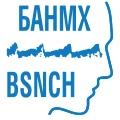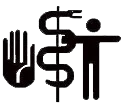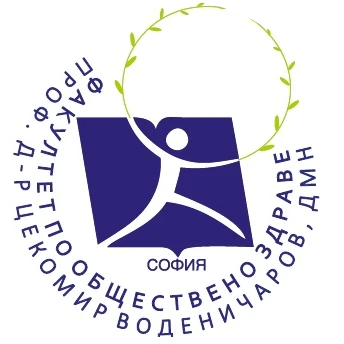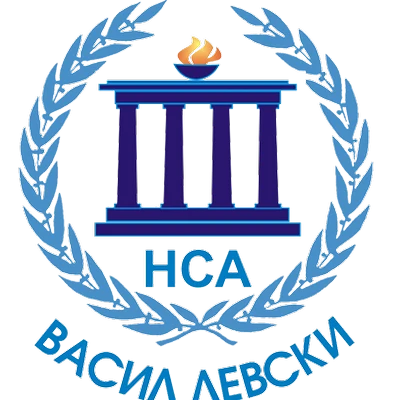Rehabilitation, physiotherapy, manual therapy and all methods of modern physiotherapy together for you and your health – this is our goal! Individual and quality procedures according to the specific condition of the patient.
We do NOT spare efforts, opportunities and work for the patient’s health, and the faster the necessary measures are taken, the more durable and high-quality the treatment result is.

Bobath
The founders of the Bobath concept are physiotherapists Berta Bobath and her husband Dr. Karel Bobath. In the beginning, it was directed to children with cerebral palsy and adults who had experienced a stroke. The modern Bobath concept takes a holistic approach to the assessment and treatment of patients with movement disorders and poor postural control. It explores their sensory and perceptual deficits, is concerned with the patient’s adaptive behavior and focuses on motor problems in order to provide treatment tailored to the individual needs of the patient. It can be applied to persons of all ages regardless of the degree of physical and functional disability.
The concept views movement as the result of the dynamic interaction between perception, cognition, and action systems. Emphasizes the ability of the central nervous system to receive, integrate, and respond to the environment to achieve a motor goal. The Bobat approach is holistic and covers all areas of everyday life.
The concept is a learning process to regain motor control and the patient should not be encouraged for compensatory movements that may occur naturally as a result of a central nervous system lesion. Bobath practitioners aim to provoke a new skill or part of a skill in the most simple way possible through the active participation of the patient. The chosen skill is observed, analyzed, interpreted, experimented and the result is measured.
Neurorehabilitation IZGREV is certified to work with the Bobath concept by the International Bobath Instructors Training Association (IBITA) with instructors from the Kingdom of Belgium, Greece, etc.
Bobat therapy normalizes muscle tone and stimulates the development of correct motor skills, and the end result is the formation of a correct movement pattern and the application of the acquired skills in everyday life.
Proprioceptive neuromuscular facilitation (PNF)
Our therapists are certified and experienced in performing specialized PNF techniques on patients with neurological problems and non-progressive diseases of the central nervous system.
Propriceptive Neuromuscular Facilitation (PNF) is a method pioneered by Dr. Kabat that is directed to the dysfunctions of the neuromuscular system.
At the core of the philosophy of PNF are the words of Dr. Kabat, that every human being, including those with serious disabilities, has a hidden and unused potential. Based on this principle, the task of the therapist is to mobilize the patient’s reserves and focus on the unused existing potential of the individual. This approach is integrated and explores the person as a whole rather than concentrating on a particular problem or body segment. The concept focuses on the patient’s positive aspects and abilities in physical and psychological aspects.
The methodology aims to stimulate the proprioceptors located in various structures of the human body and through them to provoke certain neurophysiological processes such as: Temporal sumation, Spatial summation, excitation irradiation, reciprocal innervation, Successive induction. The specific techniques of PNF are aimed at improving body functions or a specific activity specified in advance in the treatment plan. The techniques combine different types of muscle contractions and adapt to the needs of the patient. They can relax a tight muscle, increase range of motion, increase muscle strength and help hold a position.
The main goal of the concept is for the patient to reach the highest level of functionality by following the principles of motor learning and motor control. PNF is suitable for patients with upper motor neuron lesions accompanied by spasticity, and can also be used to initiate muscle contraction in patients with partial peripheral nerve damage and extreme muscle weakness. Through the method, movements with a specific sequence are applied to stimulate muscle and neurological functions .
Mulligan
New Zealand physiotherapist Brian Mulligan developed the Mulligan concept of treating musculoskeletal injuries through movement mobilization.
Mulligan’s concept includes several different mobilization techniques to treat spine, neck or back pain, and pain in the extremities such as:
– stiffness in the joints in the back or neck, as well as in the arms or legs
– reduced range of motion in the back or neck, as well as the arms or legs
– pain in the back or neck, as well as in the arms or legs
Mulligan also treats extremities affected by spinal cord injury. Mobilization techniques include natural apophyseal glides (NAGs), sustained natural apophyseal glides (SNAGs) and mobilization with movement (MWM). The goal of these mobilizations is to increase the pain-free range of motion of the spine and affected extremities.
Mulligan’s concept has the following advantages:
– reduces pain
– increases the pain-free range of motion of the spine and extremities
– reduces soft tissue inflammation.
Our therapists are qualified and board certified with experience performing specialized Mulligan techniques on patients who have any type of chronic pain.
Cyriax
The Cyriax approach focuses on the diagnosis and conservative treatment of soft tissue injuries in the musculoskeletal system. It has been proven to treat any condition affecting the tendons, ligaments, muscles and bursa, having a positive effect on the cervical, thoracic and lumbar spine of the body.
This method mainly focuses on examination, medical history, functional examination, palpation, diagnosis and differentiation of diagnosis. As a result of correct and accurate diagnosis, specific techniques are applied to treat soft tissue diseases, such as deep transverse friction, mobilization, infiltration, tractions and manipulations of the spine and peripheral joints.
The Cyriax method offers several different types of treatment, such as deep transverse friction, specialized manipulations and mobilizations, tractions and infiltrations. Its application must be performed by a certified specialist in the field of physiotherapy and rehabilitation.
Magnetotherapy
Magnetotherapy has a proven healing effect on the whole organism. It has an extremely strong effect on the cell membrane, increasing the cell permeability and changing the membrane potential. Magnetotherapy has a therapeutic effect on the nervous, cardiovascular, endocrine, digestive and bone systems. Through its influence, three adaptation reactions develop, namely training, activation and stress, the latter being avoided and the first two having a therapeutic effect.
Magnetotherapy therapy has many health benefits and has been shown to be effective as an adjunctive therapy for the treatment of osteo and rheumatoid arthritis, tissue and bone injury, neuropathy, mental disorders, stress, post-polio pain and many other conditions.
The effects of magnetotherapy are:
– anti-inflammatory
– improving blood circulation and reducing swelling in sprains, strains and other injuries
– increasing immune function
– stress relief and sleep improvement
Magnetotherapy therapy works very well to relieve neurological pain and has a molecular action that reduces inflammatory processes in the body.
Research on the effects of magnetic therapy shows that it is most effective when high-tech devices, proper methodology and treatment protocols are used by a qualified specialist.
Ultrasonic therapy
Ultrasound is a mechanical and wave-propagating movement of particles in a material ambience with a frequency above 20,000 Hz.
It has been proven that ultrasound is used in rehabilitation, surgery and diagnostics of a number of diseases as a powerful energy factor that is harmless and easily tolerated by the body.
Ultrasound has many beneficial physico-chemical, thermal and bactericidal effects.
Neurorehabilitation IZGREV successfully applies ultrasound as a kind of tissue micromassage, which facilitates diffusion through the cell membrane, activating intercellular metabolism. Nerve conduction increases and spasms of smooth and striated muscles are reduced.
Through ultrasound, good therapeutic effects such as anti-inflammatory, analgesic, fibrinolytic and anti-allergic effects are achieved. Tissue regeneration is stimulated and metabolism is improved.
It is used in diseases of the nervous system such as various types of neuralgia, neuritis and phantom pains. It is also used for disc herniations, spondyloarthrosis, cervical osteochondrosis and radiculitis.
Peripheral joints mobilization
Peripheral joint mobilizations are used to restore joint mobility when it is impaired by reversible limitation. After functional examination of the restricted joint, specific and targeted mobilization techniques can be performed. The main goal of manual joint mobilization is to improve joint mobility and to eliminate pain.
Any immobilization leads to hypotrophy of the articular cartilage and intra-articular adhesions. Contractures may also occur. Excessive loads on the joints lead to their earlier wear and degenerative changes in the joint cartilage. The joints in the human body are nourished thanks to the movements, and the articular cartilages are nourished by the synovial fluid found in the joint itself.
Causes of joint dysfunction can be: pain, muscle spasm, swelling, muscle spasm, joint blockage, contractures, adhesions and bone deformities.
Joint mobilizations improve joint mobility, reduce joint pain, reduce muscle spasm and maintain trophic.
Absolute contraindications for applying manual mobilization are: tumors, rheumatoid arthritis, unhealed fractures, unstabilized luxations, distortions, bone diseases, acute pain, joint hypermobility and endoprosthetic joints. Relative contraindications are: osteoporosis, subacute Zudeck syndrome, long-term use of corticosteroids, systemic connective tissue diseases or elderly patients.
Neurorehabilitation IZGREV successfully apply all the specialized manual techniques necessary for the successful and adequate treatment of your dysfunction.
Peripheral nerve mobilization
The peripheral nervous system is a branch of the central nervous system and is responsible for receiving and transmitting information from the brain and spinal cord to the limbs and internal organs. Peripheral nerves do not have the characteristic protection of the central nervous system and are vulnerable to mechanical and toxic damage. Without normal mechanics of the nervous tissue, it becomes difficult to transmit impulses to the connective tissue.
The peripheral nervous system is closely related to the musculoskeletal system, and this is a mechanical environment in which movements take place and therefore the nervous tissue is subjected to stressful influences. Diseases of the musculoskeletal system can easily lead to problems related to impaired neurodynamics.
Peripheral nerve mobilization is a method by which pain caused by disturbed neurodynamics is reduced. The elasticity and trophicity of the nerve is improved, as a result of which the self-healing processes of the affected nerve structure are strengthened.
It is suitable for disorders related to the mobility and elasticity of the nervous system. Such conditions can lead to muscle shortening, contractures, increased muscle tone, limitations in movement volume, sensory disturbances, pain, circulatory disorders, etc.
Contraindications for the application of mobilizations of the nervous system: disc herniations, inflammatory processes, severe pain, lesions of the nervous system, tumor of the nervous system, etc.
Peripheral nerve mobilization is used in a number of neurological and orthopedic diseases. It helps to speed up the rehabilitation process and make the patient recover faster.
Postisometric relaxation
Postisometric relaxation is a manual relaxation technique that is performed for problems in the muscular system. It focuses on the functional disorders of the muscles rather than the specific diagnosis.
Postisometric relaxation can be performed for limited mobility in the limbs, torso and spine, and can target a specific muscle or muscle fibers.
It is performed by experienced therapists after a thorough functional study, and to achieve a therapeutic effect, a set of important methodological steps must be followed.
Postisometric relaxation reduces increased muscle tone by stimulating proprioceptors, thereby suppressing nociceptive (pain) fibers. It reduces muscle spasm in ligament pain, tendomyositis, muscle imbalance, etc.
The technique removes the functional connection between joint blockage and protective muscle spasm. It is non-traumatic and completely painless.
Properly applied, it has a strong analgesic effect and helps to increase the range of motion of the extremities, torso and spine.
Therapeutic massage
Therapeutic massage is a means by which a prophylactic and curative effect is exerted on the patient by performance of mechanical techniques and procedures.
The dosed mechanical and physiological impact leads to healing reactions of the body.
Neurorehabilitation IZGREV successfully performes specialized techniques of manual therapy with neuroreflex and humoral effects on the receptor apparatus of the skin. We affect all parts of the central, vegetative and peripheral nervous system. Massage techniques and procedures regulate excitatory processes in the central nervous system and contribute to a toning, pain-relieving and relaxing effect.
Through specialized techniques, we have a direct and positive impact on the circulatory system, the entire musculature and the joint apparatus. We regulate metabolic processes and activate the functions of connective tissue by improving trophic and blood supply.
Our neurorehabilitation team has specialized massage techniques that it successfully applies and combines in the therapy of significant neurological diseases and others of a general nature.
Due to the team’s busy schedule, we rarely commit to single massage treatments.
Percussive therapy (Theragun)
Mechanical percussive therapy using specialized devices is extremely useful for stiffness and muscle pain relief. Accelerates blood circulation and recovery after vigorous physical exercises and injuries.
An exceptionally good influence on the soft tissues of the body is observed. Specialized percussive therapy devices have the unique ability to prevent inflammation caused by adhesions between fascia and muscles.
Neurorehabilitation IZGREV successfully applies the methods of vibration therapy as prevention of muscle pains and injuries, as well as to calm the nervous system.
Low frequency laser therapy
Low power laser therapy is becoming a common and highly effective practice in physical medicine and rehabilitation.
Laser therapy increases ATP synthase synthesis and reduces oxidative stress by improving mitochondrial electron transport chain efficiency. It is widely used in neurological diseases such as peripheral nerve regeneration, spinal cord injury, stroke and neurodegenerative diseases.
Laser therapy activates transcription factors, suppresses inflammation and successfully affects neurotrophic factors such as brain-derived neurotrophic factor and nerve growth factor.
Beneficial anti-inflammatory, regenerative, analgesic and immune-stimulating effects are observed in patients with neurological diseases. Diseases subject to specialized treatment are discopathy and disc herniation, degenerative diseases of the spine, acute radiculopathy and neuralgia. Low-frequency laser therapy helps for a significant amount of structural and cellular changes, making it a viable approach for the treatment of neurological diseases.
Electrotherapy
Electrotherapy is a physical therapy treatment that uses electric current to stimulate certain parts of the body affected by neurological disease or pain, inflammation, atrophied muscles, musculoskeletal injuries and others. It is also highly valued in sports medicine, where it helps to speed up recovery after intense sports loads. Currents of low voltage and frequency are mainly used, causing analgesic, anti-inflammatory, excitomotor, trophic, thermal and other therapeutic effects.
The type of treatment using electrotherapy depends on the diagnosis of each patient. The most frequently used electro- therapeutic methods used in rehabilitation are:
1. Transcutaneous electrical nerve stimulation (TENS). It consists of applying an electric current to control chronic and acute pain. Through the TENS equipment, pulses of electrical stimulation directed at the sensory nerves are transmitted, thereby achieving an analgesic effect. The technique is non-invasive, simple and without side effects.
2. Interferential therapy (IFT). This technique consists of low-frequency electrical stimulation for pain relief, muscle stimulation, increased blood flow and reduced tissue swelling. IFT essentially acts most quickly and effectively on nerve tissues to relieve pain.
3. Electrical muscle stimulation (EMS). This type of therapy is used to generate impulses that stimulate motor neurons and cause muscle contraction. It is also known as muscle training therapy because its effect is similar to that in which different muscle groups are trained. EMS treatment is used for muscle atrophy, contractures, stimulation of paralyzed muscles, strengthening of joint stability and reduction of pain.
4. Electrophoresis. This is an efficient electrotherapeutic method in which medicinal substances are also introduced into the body by means of galvanic current or other monopolar currents. In practice, it is very important to consider a number of factors such as the concentration of the solutions, the duration of the procedures and other morphological characteristics of the skin area on which the procedure is performed. The therapeutic effect of electrophoresis has a number of advantages, such as the formation of a skin drug depot, contributing to the gradual and uniform absorption of medications.
Electrotherapy is effective in patients suffering from pain of nerve origin such as numbness, burning in hands and feet, pain throughout the body. It can be used for therapeutic purposes as an individual technique or as an addition to specialized rehabilitation. Diseases such as rheumatoid arthritis, muscle atrophy, neuralgia, osteoarthritis of the spine, acute or chronic joint, shoulder, wrist or hip pain are very well affected by electrotherapy.
During the sessions, the electric current is directed and applied under control, creating a feeling of relaxation in the patient’s body. The therapy is painless and non-invasive.
Cryotherapy and light therapy
Light therapy is applied for curative and prophylactic purposes using natural or artificial sources. According to the wavelength and their physical properties, the light radiations are infrared and ultraviolet.
Heat is one of the oldest known factors in physical and rehabilitation medicine. It has been applied since ancient times, with the most pronounced effects of heat being anti-inflammatory, pain-relieving, trophic, anti-spastic and contributing to the formation of biologically active substances in the body. Heat therapy through light therapy and other specialized techniques increases blood circulation. In this way, the blood vessels dilate and blood manages to reach the smallest capillaries. Improved blood circulation enables the body to increase its metabolic activity by providing more nutrients to the body tissues. Blood circulation and metabolic processes are significantly improved. At the same time, the excitability of the peripheral sensory nerves decreases and the pain decreases.
Cryotherapy or ice treatment is a method in which cold is used as a therapeutic factor. It is most often used in local application, as the effect of the procedure is a reduction in muscle tone and a delay in nerve conduction. Joint movement is improved, inflammatory processes are suppressed, and local cryotherapy is extremely suitable in combination with specialized kinesitherapy.
Shockwave therapy
Shock wave therapy is a highly effective, non-invasive treatment for damaged soft tissues in the human body. It is safe and an alternative to surgery or steroid and other drug injections. Shockwave therapy has proven metabolic reactions that activate the healing process. It has a rapid healing and pain-relieving effect in chronic muscle and tendon diseases, including Achilles, hamstrings, patellar, gluteal and chronic tendinopathies.
Patients can expect:
– Reduction of pain of a neurological nature
– Increasing the blood circulation
– Stimulation of the treatment and healing process
– Long-term normalization and tissue regeneration
Shock wave therapy is rapidly taking place as a non-surgical treatment used in physical therapy practice. Shockwave works by applying energy pulses to the specific areas where there may be abnormal or damaged tissue. The waves spread inside the tissue and provoke an increase in blood flow to the specified area. As a result of improved circulation, the local metabolism is accelerated and stimulates rapid cell regeneration. The result of shock waves is faster recovery from injury and pain relief for a number of chronic conditions.
Our goal is to help patients reach their full potential, thereby rapidly improving their independence.
Neuro Rehab IZGREV has closely specialized professionals with extensive experience in neurorehabilitation, trained to improve the quality of life and autonomy of the patient.
We offer professional therapeutic massage of the highest class combined with electrostimulation and magnetic therapy.
In this way, we will decrease the discomfort and improve your general condition. We make serious efforts to eliminate the pain and the cause of its occurrence, and with its pain-relieving effect, the therapeutic massage will eliminate fatigue and stimulate the healing process of the body.
In order to achieve better rehabilitation and quick recovery, we accept fewer patients and our free hours are limited!


